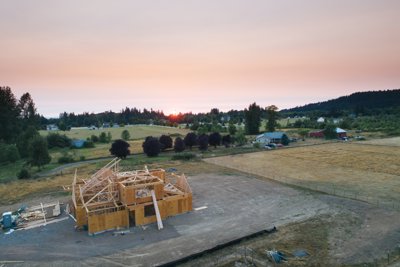Research from the University of Leeds created a low-carbon housing model incorporating a pioneering mutual ownership approach (Low Impact Living Affordable Community: Lilac). Lilac residents have reported increased financial security, wellbeing and carbon savings compared to typical UK households. The Lilac Model led to £180,000,000 of further investment from the UK government, new community housing policies, and the first city-region hub for community housing.
Issue
Ensuring future housing is environmentally sustainable, affordable, and considerate of community needs are major policy challenges.
Approach
Research funded by ESRC assessed the benefits of community housing activists in delivering sustainable and affordable housing. Further research recommended setting up community-led, co-produced research platforms including learning resources, training and funding mechanisms so community activists could directly tackle the housing crisis.
The research team deployed a co-production research approach with a group of Leeds residents to develop a test project called ‘Lilac’, and create a model for community-led, affordable and low impact living that responds to the housing, social and climate crises.
Impact
The research base has underpinned widespread growth in community-led housing, as shown when the UK housing minister (2011-2014) launched a £14,000,000 Community Led Project Support scheme at the Lilac opening.
Members of the research team were invited to join the steering group of the National Community Homes Alliance in 2015, which lobbied the Housing, Communities and Local Government Secretary of State to expand government funding leading to the £163,000,000 Community Housing Fund in July 2018.
The Lilac Model led to multiple projects representing >1,200 housing units and £431,000,000 investments, which have had positive impacts on the environment and residents. Energy used for a 3-bed lilac home is 66% lower than the UK average, and residents reported 96% satisfaction with their accommodation, higher than all other tenure types in the UK.
More information
Institution: University of Leeds
Researchers: Professor Paul Chatterton, Professor Sara Gonzalez, Dr Rachael Unsworth
Share this resource
This is an open access article under the terms of the Creative Commons Attribution License (CC BY NC 4.0), which permits use, adaptation, distribution and reproduction in any medium or format, provided the original work is cited and it is for non-commercial purposes. Please contact us for other uses.
How to cite
Royal Geographical Society (with IBG) (2023) Government policy and homebuilding practices influenced by the Lilac Model of community-led, sustainable and affordable mutual housing. Available at https://rgs.org/community-ledhousing Last accessed on: <date>
